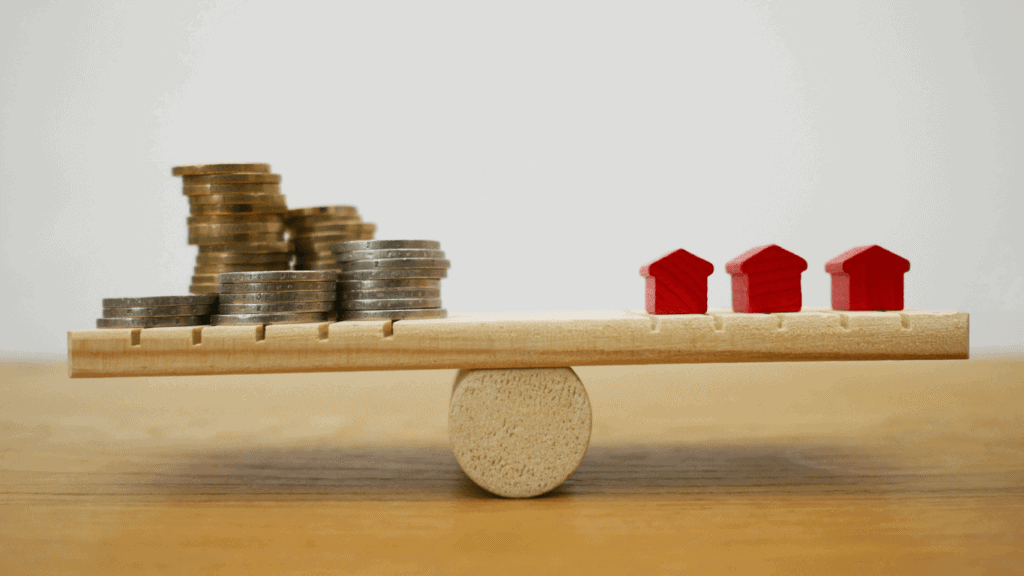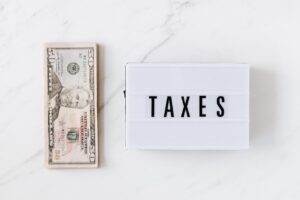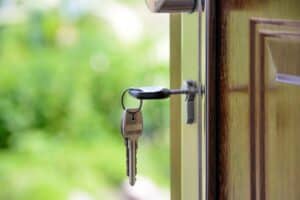If you’re a first-time homebuyer in Canada, you’ve probably come across two big acronyms while figuring out how to save for your dream home: FHSA vs RRSP. On the surface, both sound like great options—but which one is actually better for your situation?
Let me walk you through it in a down-to-earth, no-jargon kind of way. In this post, we’ll break down the key differences between the First Home Savings Account (FHSA) and the Home Buyers’ Plan (HBP) through your RRSP. We’ll look at real-life examples, pros and cons, and a few handy tips to help you decide which one makes the most sense for your homeownership journey.
Table of Contents
Meet Hannah and Andy: First-Time Buyers with Big Dreams
To keep things relatable, let’s introduce Hannah and Andy, a couple in their early 30s living in Calgary. Like many millennials, they’ve been renting for years and are finally ready to buy their first home. They’ve heard of both the FHSA and RRSP, but aren’t sure which one makes more sense.
Hannah works in finance and earns $85,000 a year. Andy is a supply teacher and brings in around $60,000. They’ve managed to save some money but want to make the most out of tax-advantaged accounts before taking the plunge into homeownership.
Let’s unpack FHSA vs RRSP so they—and you—can make an informed decision.
What is an FHSA?
The First Home Savings Account (FHSA) is a new registered account introduced in 2023 to help first-time homebuyers save up to $40,000 toward a home—tax-free.
Key Features of the FHSA:
- You can contribute up to $8,000 per year, with a lifetime max of $40,000.
- Contributions are tax-deductible, like an RRSP.
- Withdrawals used to buy a qualifying home are completely tax-free, like a TFSA.
- You must use the FHSA within 15 years of opening it, or by age 71, whichever comes first.
- You must be a first-time homebuyer and 18+ years old to open one.
Think of it as the lovechild of the RRSP and TFSA—tax perks on both ends!
What is the RRSP Home Buyers’ Plan?
The RRSP Home Buyers’ Plan (HBP) lets you withdraw up to $35,000 from your RRSP to buy your first home tax-free, as long as you pay it back within 15 years.
Key Features of the RRSP HBP:
- You can withdraw up to $35,000 (or $70,000 for couples).
- Must be repaid over 15 years, or the unpaid amount is added to your taxable income.
- You don’t pay tax on the withdrawal if you meet the conditions.
- The funds must be in your RRSP for at least 90 days before withdrawal.
FHSA vs RRSP: Tax Treatment
FHSA:
- Tax-deductible contributions lower your income today.
- Tax-free withdrawals if used for a qualifying home.
RRSP (HBP):
- Also tax-deductible contributions.
- Withdrawals are not taxed immediately, but you have to repay yourself over 15 years—or get taxed.
Example:
Hannah contributes $8,000 into her FHSA in 2025. Her taxable income drops from $85,000 to $77,000. When she withdraws the $8,000 to buy a condo in 2028, she pays no tax.
Andy, on the other hand, contributes $8,000 into his RRSP and later withdraws $8,000 via the HBP. He has to repay about $533/year for 15 years, or that $533 will be added to his taxable income each year he doesn’t repay it.
Related content:
FHSA vs RRSP: Contribution Room
FHSA:
- $8,000 per year; unused room carries forward (up to the $40,000 limit).
- Brand new room starting the year you open the account.
RRSP:
- Room is based on 18% of your previous year’s income, up to a limit (e.g., $32,490 in 2025).
- Any unused room carries forward indefinitely.
If you’re just starting out or have low income, the FHSA gives you fresh room without relying on past income.
FHSA vs RRSP: Repayment and Flexibility
This is a big one.
FHSA:
- No repayments required if it’s used for a qualifying home purchase.
- Use it to buy a home—or if you change your mind, you can transfer it to your RRSP or RRIF without tax consequences.
- If unused after 15 years, you’ll need to transfer or withdraw it (withdrawals are taxed if not used for a home).
RRSP (HBP):
- You’re borrowing from yourself and must repay it.
- Repayment starts 2 years after you buy.
- If you miss a payment, that amount will be added to your taxable income each year you don’t repay it.
Hannah loves the idea of not worrying about repayments—she already has student loans. Andy, however, doesn’t mind repaying himself if it means more upfront money for a down payment.
Can You Use Both FHSA and RRSP for a Home?

YES. And it’s a huge plus.
If both Hannah and Andy max out their FHSA ($40,000 each) and use $35,000 each from their RRSP via the HBP, that’s $150,000 total toward their first home—with serious tax benefits.
This is actually the strategy I’m planning to use myself. Living in Toronto, where housing is still so unaffordable, I’ve made it a goal—starting in 2023—to max out both my FHSA and RRSP contributions. It’s my way of steadily growing a home-buying fund, with the hope of purchasing something (hopefully!) within the next 3 to 5 years.
Who Should Use the FHSA?
- Younger buyers who have time to grow their savings.
- People in lower-to-mid income brackets who want tax relief and tax-free growth.
- First-time homebuyers who aren’t sure if they’ll buy in the next few years—but want to lock in savings.
- Anyone who wants zero repayment stress.
Who Should Use the RRSP HBP?
- Higher-income earners with more RRSP room.
- Buyers who need immediate access to funds (FHSA requires contributions first).
- Those planning to buy soon, within a year or two.
- People who don’t mind structured repayments.
Hannah and Andy’s Game Plan
Here’s what they decided:
Year 1 (2025):
- Hannah contributes $8,000 to her FHSA.
- Andy contributes $8,000 to his RRSP (he’ll use it via HBP).
Year 2 (2026):
- They each contribute another $8,000 to their FHSA.
- Andy keeps building his RRSP by contributing $8,000.
Year 3 (2027):
- They decide to buy. Hannah has $16,000 in her FHSA plus investment growth.
- Andy has $8,000 in his FHSA and $16,000 in his RRSP HBP funds.
Together, they use:
- $24,000 from their FHSAs
- $16,000 from Andy’s RRSP via HBP
- Plus $20,000 in regular savings
Boom—$60,000 for their first home.
Additional Tips for First-Time Homebuyers
- Start early: The sooner you open your FHSA, the sooner your room accumulates.
- Invest wisely: Both FHSA and RRSP can hold stocks, ETFs, GICs, etc. Don’t just leave it in cash.
- Combine savings strategies: Use a TFSA for additional flexibility, especially if you’re unsure about timing.
- Watch the deadlines: RRSP contributions for HBP must be in for at least 90 days before you can withdraw.
- Understand the definition of “first-time homebuyer”: CRA defines this as someone who hasn’t lived in a home they (or their spouse/common-law partner) owned in the past 4 years.
Related content:
What If You Don’t End Up Buying?
- FHSA: Transfer to an RRSP or RRIF tax-free without impacting your RRSP contribution room.
- RRSP HBP: You still have to repay what you withdrew, or the unpaid amount becomes taxable each year.
This is where the FHSA clearly wins for flexibility.
Final Thoughts: FHSA vs RRSP—Which Is Better?
Honestly? It depends. But here’s a cheat sheet:
| Situation | FHSA | RRSP (HBP) |
|---|---|---|
| Want tax relief now AND tax-free withdrawal later? | ✅ | ❌ |
| Okay with repayments? | ❌ | ✅ |
| Need money fast (in <90 days)? | ✅ | ❌ |
| Want investment growth? | ✅ | ✅ |
| Unsure about buying soon? | ✅ | ❌ |
| Higher income, more RRSP room? | ✅ | ✅ |
So if you’re like Hannah and Andy—earning a decent income, planning ahead, and wanting to save without repayment stress—FHSA is likely your best friend.
But if you need funds sooner, have maxed out FHSA, or want to boost your buying power, RRSP HBP can still be your ally.
Have you opened your FHSA yet? Are you planning to buy in the next few years? Share your story in the comments—I’d love to hear how you’re navigating the FHSA vs RRSP decision.
And if you found this post helpful, feel free to share it with a fellow first-time homebuyer!




